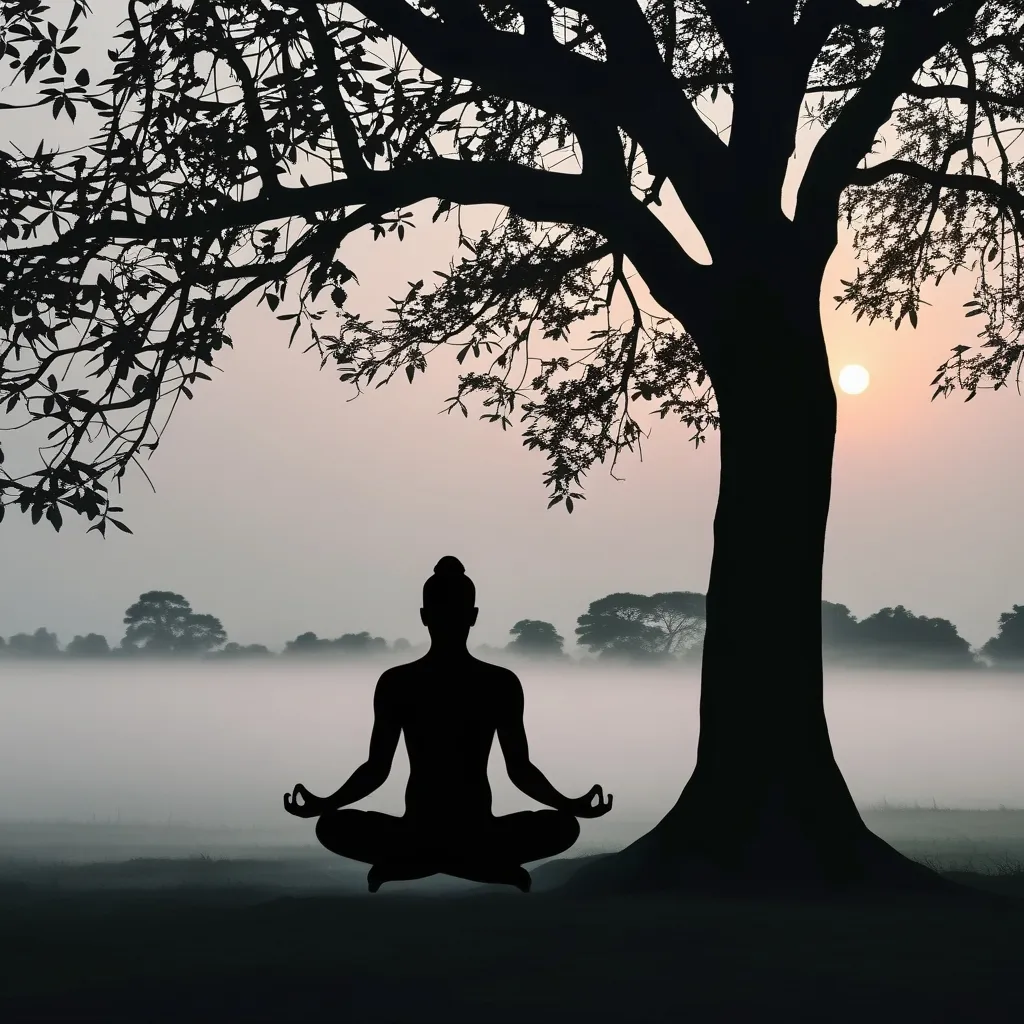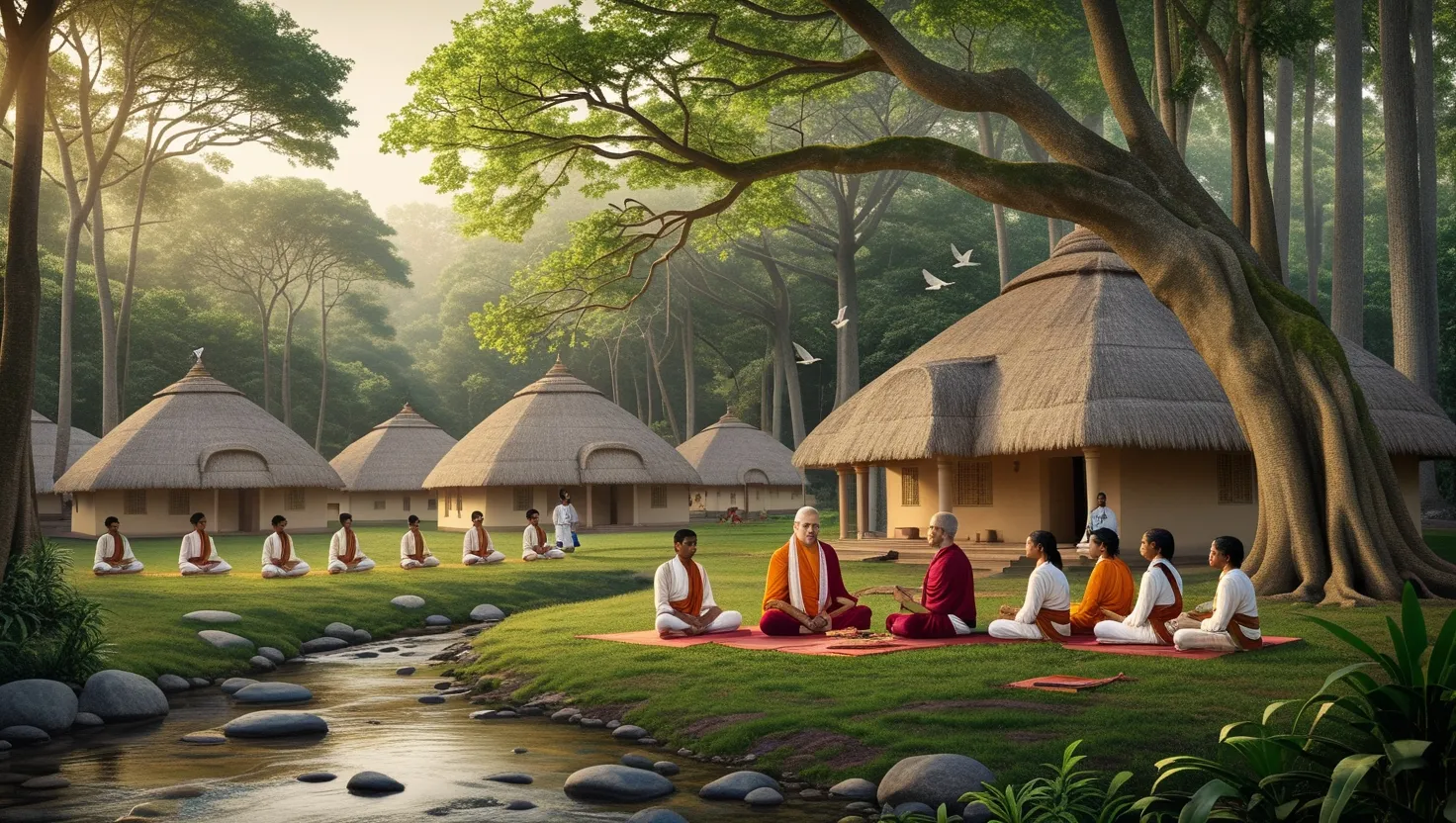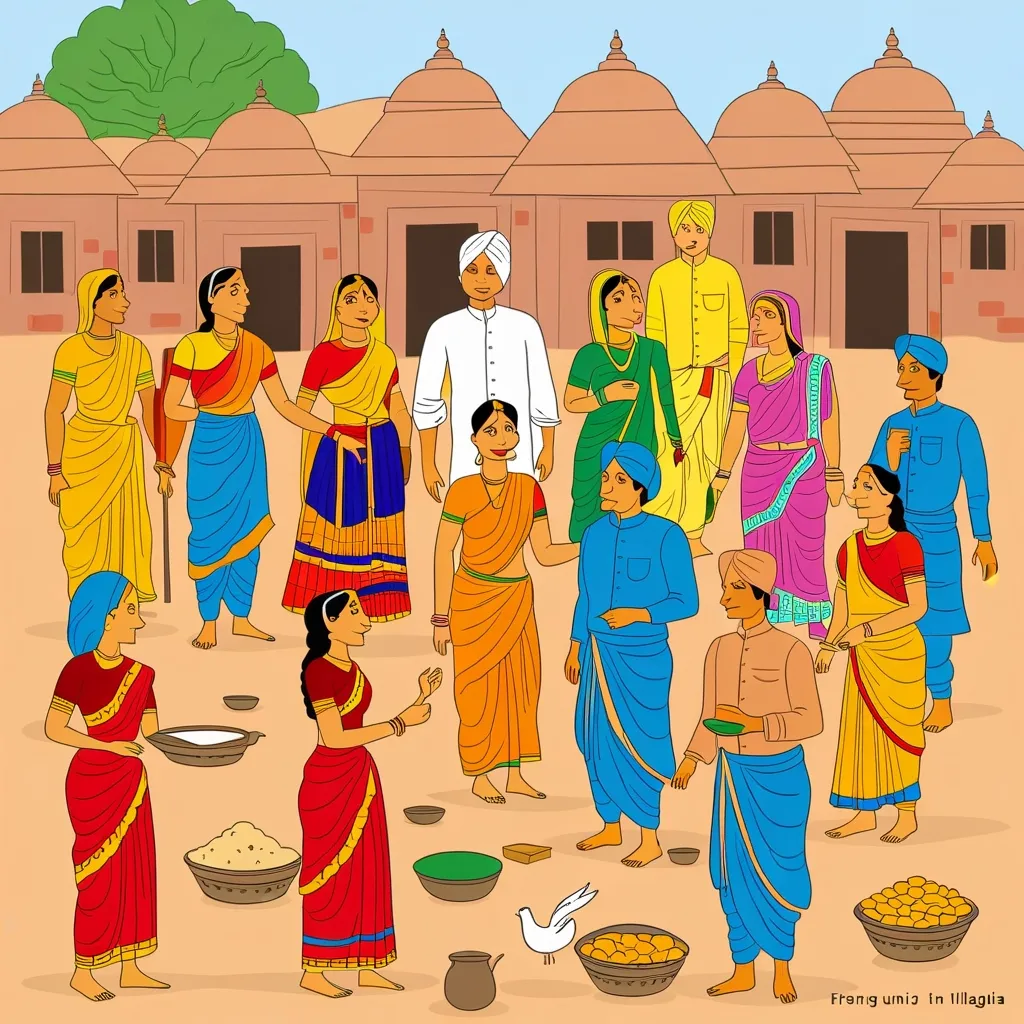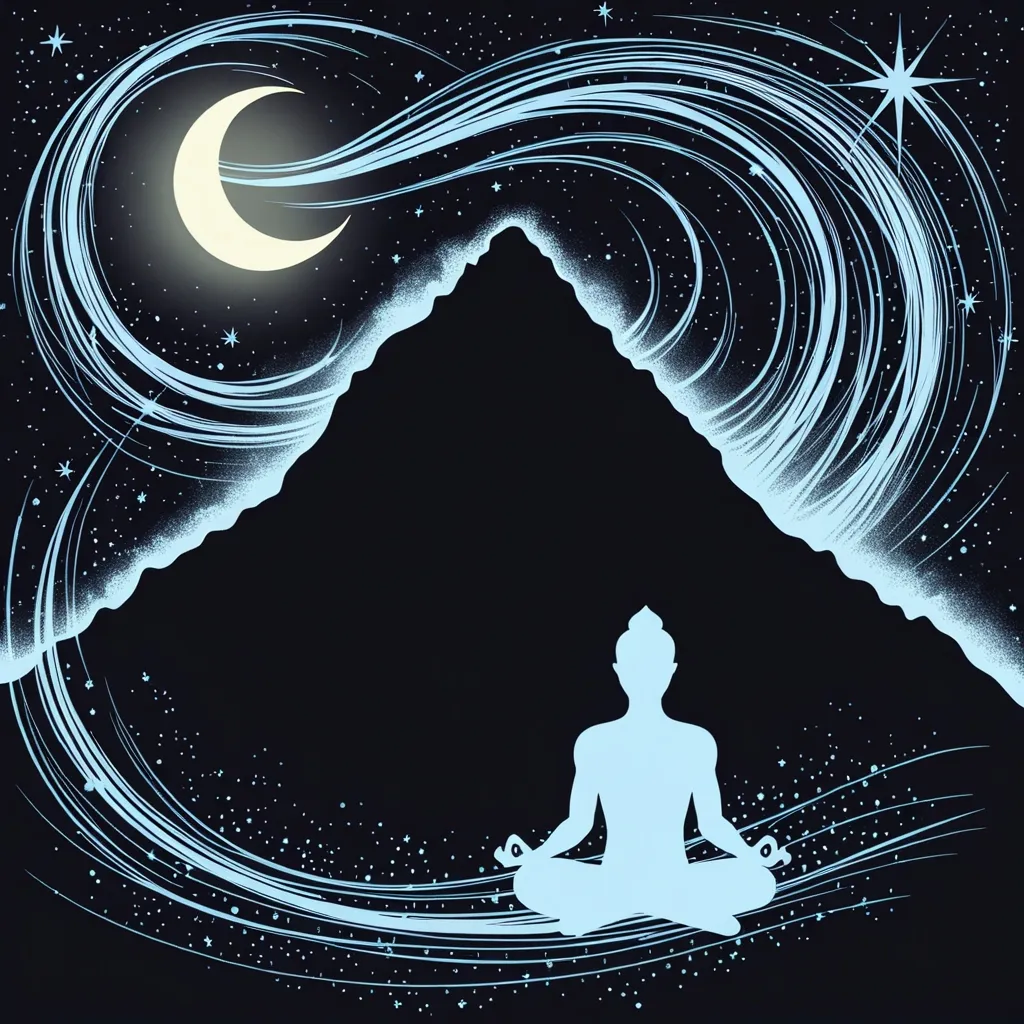Yoga isn’t just a mat and some stretches, it’s a deep, wise philosophy passed down from ancient India. It’s an age-old practice that touches the heart, body, and soul, aiming to enhance our entire being. Imagine reading through a guide that could steer you to a state of oneness with everything around you. The Yoga Sutras is exactly that—a timeless script that holds the key to unlocking our connection with the universal consciousness.
At the core of these teachings is Maharishi Patanjali, a profound sage from around 400 CE, who distilled the wisdom of yoga that was once shared orally between teacher and student. He transformed it into a treasure chest of knowledge accessible to all, marking a monumental point in the history of yoga.
One of the jewels of the Yoga Sutras is the concept of the Eight Limbs of Yoga—a holistic roadmap not just for practicing physical postures but for living a life aligned with peace and inner freedom. These eight limbs act like steps leading towards self-realization. Let’s unravel them one by one.
We start with Yama, the ethical guidelines that shape how we interact with the world around us. They’re like a moral compass with five key pointers: non-violence, truthfulness, non-stealing, control of desire, and non-possessiveness. These aren’t just lofty ideals; they’re practical ways to cultivate kindness, truth, and detachment in our daily lives.
Next is Niyama, focusing on self-discipline and personal growth. It encourages practices like keeping oneself clean, being content with what we have, developing self-discipline, understanding oneself through self-study, and surrendering to a higher power. These observances help us build a solid and peaceful connection with our true selves.
Moving to the physical stuff, we have Asana, often mistaken as the totality of yoga. But it’s merely the third limb, where physical postures prepare the body for the deeper journey. Then comes Pranayama, the art of controlling the breath, which is a game-changer in managing that life force within us. And Pratyahara, where we begin to withdraw our senses from external distractions, setting the stage for inward reflection.
Then we delve into the mind’s arena with Dharana, Dhyana, and Samadhi. Dharana is all about concentration, anchoring the mind to a single point of focus. Dhyana, or meditation, is an uninterrupted flow of concentration. And Samadhi? It’s that ultimate state where you’re completely absorbed in the cosmic consciousness—a peek into enlightenment.
Throughout the Sutras, several teachings really hit home for practical living. There’s a strong focus on practice and detachment to quiet the mind’s chaos. It’s about understanding oneself beyond worldly goals. Consistent dedication and the right mindset are another gem, emphasizing their importance for a steady life path. Coupled with faith, effort, and reflection, they become the foundation for effective yoga practice, especially when results aren’t immediately visible.
One particular teaching on emotional stability is about embracing certain attitudes: kindness toward happiness, compassion for suffering, and equanimity during difficult times. It’s a reminder that controlling our emotional responses can lead to a peaceful and steady mind amid life’s chaos.
But how do these insights fit into daily life? Integrate them, and they become a guide for living a worthy and intentional life. Practicing Yama and Niyama develops a strong ethical ground. It’s like a moral armor that, when worn, helps live a life filled with truth and contentment, shifting the focus inward rather than relying on external happiness.
Practices like Asana, Pranayama, and meditation are not just about warming up or cooling down—they’re preventive strategies for maintaining mental health and avoiding future distress. They teach us to steady our minds and prepare us to engage with life more fully.
Emotions, while complex, are addressed with simplicity in the sutras. By practicing attitudes like friendliness and equanimity, we learn to handle emotions better, leading to a stable and undisturbed mind even during tough times.
While yoga is fundamentally a personal journey, sharing the path with others enriches the experience. Practicing in groups, whether through physical postures, breathing exercises, or philosophical discussions, cultivates a sense of community that supports and elevates everyone involved. It’s this collective spirit that amplifies individual growth.
The Yoga Sutras are a bridge to a better understanding of oneself. When we bring these ancient lessons into the hustle of our daily lives, we find ourselves on a journey toward self-discovery and expansion. The guidelines laid out by Patanjali aren’t just exercises but a way of life. They’re a call to evolve, discover, and ultimately unite with the vast universe, offering boundless rewards for those who remain committed. Whether this path leads to enlightenment or simply a greater sense of peace, the journey is a gift in itself, a timeless adventure that keeps on giving.






